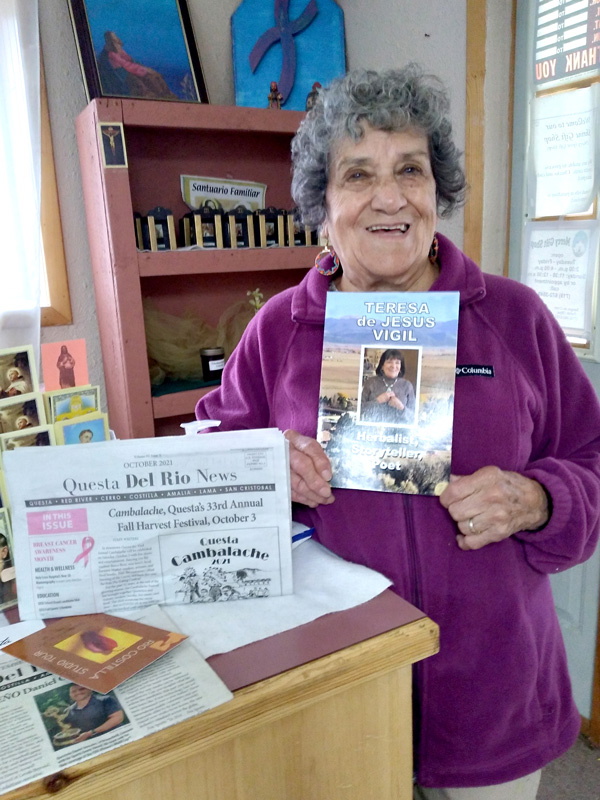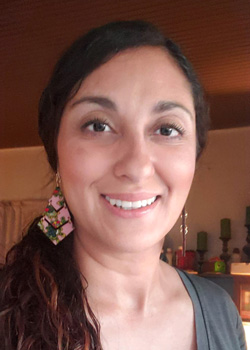
Preserving traditions has always been important to the Hispanic people. These traditions make up the foundation of who we are, passed down from our ancestors to keep the stories alive. We were taught these cultural traditions with the hope that they would be preserved for generations to come. Taught to us through our abuelos and abuelas, we learned about religious and spiritual healing with the use of what the land provides. These include native herbs and plants; we were taught concoctions and recipes for health, and even good luck.
This is exactly what one local Hispanic woman from San Luis, Colorado has been doing. Teresa de Jesus Vigil, at 89 years old, is a woman with a zest for life. She is still following the healing traditions she learned as a child from her grandmother. She has been on the path of not only teaching her children, grandchildren, and great-grandchildren, but sharing with anyone who is willing to learn about the medicine of the earth.
Teresa was born in Colorado and grew up in California. As a child she spent summers in San Luis with her grandparents, Beatriz Jaramillo and Raymundo Gallegos. It was there that she learned about planting, care, and harvesting of the gardens. She watched and learned from her grandmother about some of the native plants and how they were used in times of sickness. In those days, when a clinic or doctor was not around the corner, people had to learn how to cure themselves.
Because of this love for healing, Teresa developed an interest in the medical field. She went on to study nursing and practiced for about 40 years, working in hospitals as well as in the field of behavioral health. Later, Teresa and her family moved to San Luis, where she still resides in her grandmother’s 103-year-old two-story adobe home. It was at that time that she began to expand her knowledge of the tradition of healing herbs and remedios natural common to New Mexico and southern Colorado.
Teresa now shares what she knows throughout southern Colorado (even as far as Denver) in presentations she gives, and through her recently published book, Teresa de Jesus Vigil, Herbalist, Storyteller, Poet. She writes about all the native herbs we have locally, and their uses. Teresa also shares stories and poems written for her grandchildren. I had the great good fortune to speak with Teresa. Talking to her took me back to a time with my own grandparents, remembering some of the herbs they used to help us when we were sick.
Osha is an herb that my grandmother used—this is one of the main herbs that Teresa also talks about. Osha is a wild celery, of which there are 40 known species throughout the world. Here in our area, there are two. One is known as Osha de la Sierra, which has become a protected species, and the other is Osha del Campo which has a bigger root. Osha may also be known as Mexican penicillin because it is used for everything. You take the root, grind it, and boil it. Teresa makes tinctures with it using alcohol, such as Everclear, or vodka. Back in the old days, people would put herbs in whiskey.
I remember drinking osha root that was picked out of my grandmother’s yard, for a head cold. To my surprise my head cold was gone just as quickly as I had got it! Perhaps this is an old wives’ tale, but I remember that we were told to tie osha to our shoelaces to keep snakes away when we walked down to the Rio Grande. Teresa laughed when I told her this, and she said “Yes! Osha will keep the snakes away!”
Other plants she teaches about are Yerba Buena, or wild mint, Heirba Romero, or rosemary, and chokecherry, or Capulin, which most of us know about for jelly and wine. Chokeberry bark can also be used as medicine. You can make teas out of rosehips and manzanilla, known in English as chamomile, widely used for its relaxing properties. The list goes on—just take a look out your backyard, and see all the medicine around you, Teresa might say.
As a yerbera (herbalist), some people may think of it as Curanderismo, using the plants for healing. When I asked Teresa if she considered herself a Curandera, she laughed and said,” I believe all mothers are Curanderas; she is always having to do everything to cure the child.”
I then asked her if she felt that helping people and teaching was something from God, and she responded with, “We are all gifts from God, and God works through us all.” Teresa is very involved with her church, the Sangre de Cristo Parish in San Luis. She also happens to be a Eucharistic Minister, a lay person who assists the priest in administering the sacraments of holy communion. She also takes the sacraments to those who are ill or cannot attend mass. At 89, she stays very busy, also working at the Mercy Shoppe, her church’s gift shop.
After talking with Teresa, I found her to be awe-inspiring. She continues traditional herbalism, pioneers the way for future herbalists, and keeps the Hispanic healing culture alive. Teaching respect for the land for whatever is taken from the ground, and the beauty of Mother Nature, no matter where you live, gives us the resources to heal ourselves.



